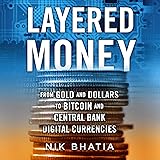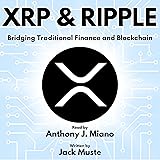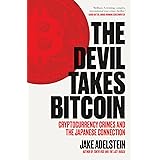The cryptocurrency market recently experienced what many are calling a “one in every five years” event: a massive **altcoin flash crash** that left even seasoned investors reeling. On a tumultuous Friday, the market saw widespread liquidations across nearly every altcoin, a move so comprehensive that it truly stood out in the history of crypto. For instance, XRP, a top-tier altcoin, plummeted over 50% in just one hour, wiping out approximately $100 billion from its market cap. While such events naturally trigger fear, the insights from the video above suggest that this very fear might be the ultimate **buy signal** for **altcoins**.
Indeed, if you’ve been in crypto for less than eight years, you likely haven’t witnessed such a pervasive liquidation event. Unlike previous major corrections, this recent crash was remarkably isolated, primarily affecting the altcoin sector while Bitcoin and traditional financial markets remained relatively stable. This distinct characteristic, combined with several key technical and macroeconomic factors, forms the basis for a surprisingly bullish outlook on **buying altcoins** in the coming months.
Navigating the Recent Altcoin Flash Crash: A “Once-in-Five-Years” Event
The recent market downturn was a brutal reminder of crypto’s inherent volatility. What made this particular **crypto market crash** unique was its sheer breadth. Where other crashes might target specific altcoins or be driven by broader market contagion, this event saw practically every single altcoin take a significant hit. This comprehensive flushing out of leverage, especially in the altcoin market, distinguishes it from many historical precedents.
However, it’s crucial to understand that a widespread liquidation event, while painful, often serves to reset the market. With excessive leverage removed, the market becomes healthier and more primed for upward movement. This is precisely why, despite the initial shock, many analysts see this as a necessary, albeit dramatic, cleansing that could precede a sustained rally for **altcoins**.
Why Current Sentiment Might Be a Bullish Signal for Buying Altcoins
In the world of investing, extreme fear often precedes significant buying opportunities. When the market is awash with panic, and everyone is afraid to **buy altcoins**, that can be the precise moment when smart money starts to accumulate. The sentiment in the altcoin market is currently at a cycle low, with little interest in new narratives or projects. This lack of interest, paradoxically, points towards a potential turning point.
The October Bull Run & Altcoin Seasonality
Historical data provides a compelling argument for a positive outlook, particularly for Bitcoin, which often leads the broader crypto market. On average, October has been the most bullish month for Bitcoin, performing positively in nine out of ten instances. While Bitcoin might be trading lower than last week’s 122K, currently around 113K, the historical pattern suggests an average return that could push Bitcoin towards 138K.
Furthermore, altcoin total market cap seasonality shows a distinct pattern: altcoins tend to chop (trade sideways with volatility) in October, then experience significant rallies in November and December. This often occurs after Bitcoin has already started its ascent, drawing renewed interest into the broader crypto ecosystem. The recent **altcoin flash crash** might have accelerated the “chop” phase, but it doesn’t invalidate the historical tendency for strong performance later in the year.
Bitcoin Dominance: A Key Indicator for Altcoin Season
One of the most vital metrics for anticipating an **altcoin season** is Bitcoin dominance. This metric measures Bitcoin’s market capitalization relative to the total crypto market. When Bitcoin dominance is in a macro downtrend, it signals that altcoins are gaining strength relative to Bitcoin, indicating a potential altcoin rally.
Currently, Bitcoin dominance remains in a macro downtrend, characterized by lower highs and lower lows, staying below its 50-week Simple Moving Average (SMA). While the recent crash caused a temporary spike in Bitcoin dominance, it did not close above the critical 62% threshold that would signal a reversal of this downtrend. As long as this macro downtrend persists, the conditions for a major altcoin season continue to mature.
Contrasting the Recent Crash with Historical Crypto Market Events
To accurately assess the current situation, it’s helpful to compare the recent **altcoin flash crash** with previous market downturns. However, as the video highlights, not all crashes are created equal, and understanding their differences is key to forming an informed investment strategy.
The COVID Crash (March 2020) vs. Today
Many might instinctively compare the recent events to the March 2020 COVID crash. However, there’s a fundamental difference. The COVID crash was a global financial event, impacting Bitcoin, the S&P 500, gold, and other commodities simultaneously. Bitcoin plummeted from 8K to 4K, and altcoins saw even more extreme losses. In contrast, the recent crash was largely isolated to altcoins. Traditional markets and even Bitcoin itself were not significantly affected, indicating it wasn’t a broad financial crisis but rather a crypto-specific liquidity event, likely due to leveraged positions within the altcoin sector.
The May 2021 Crash vs. Today
The May 2021 crash, where Bitcoin also fell significantly from 45K to 30K, causing a massive altcoin decline, offers another point of comparison. While this was a purely crypto-related event, similar to the recent crash, Bitcoin’s involvement was much more pronounced in 2021. This time around, Bitcoin’s decline was relatively contained, going from approximately 121.8K to a low of 105K on the wick – a significant move, but not a full-blown collapse from its recent highs. This suggests that while altcoins suffered immensely, Bitcoin’s resilience points to a different market structure than previous broader crypto market downturns. The crash was thus more of a targeted flush of altcoin leverage rather than a systemic crypto market top.
Crucial Indicators to Monitor for a Continued Altcoin Bull Market
For investors looking to capitalize on this potential buying opportunity, two primary technical indicators are paramount to watch. These act as critical guardrails for the bullish thesis on **altcoins**.
Bitcoin’s 50-Week Simple Moving Average (SMA)
The 50-week SMA is a widely respected indicator that often acts as the “bull market support” level for Bitcoin. As long as Bitcoin maintains its price above this crucial line, currently around 101,900, the overall bull market structure remains intact. A weekly close below 100K, however, would be a strong bearish signal, potentially indicating the end of the cycle. Fortunately, Bitcoin only wicked down to 105K and bounced off its 20-week SMA, keeping the 50-week SMA well intact.
Bitcoin Price Discovery Above 125K
Altcoins tend to truly ignite when Bitcoin enters a phase of “price discovery,” meaning it breaks above its previous all-time highs and moves into uncharted territory. While Bitcoin was recently near 122K, the crash pushed it back, necessitating a grind back up to and then beyond 125K. This move above 125K is historically when altcoin rallies gain significant momentum, as new capital flows into the market, eventually trickling down to the altcoin sector.
Macroeconomic Tailwinds Supporting a Bullish Altcoin Outlook
Beyond crypto-specific technicals, broader macroeconomic factors are also aligning to support a bullish outlook for **altcoins** and the wider crypto market.
Impending FOMC Rate Cuts
Upcoming Federal Open Market Committee (FOMC) meetings on October 28th/29th and December 9th/10th are currently pricing in a high probability of interest rate cuts – 96.7% for October and 96.1% for December. Rate cuts are generally bullish for risk assets like cryptocurrencies. They signal a more accommodative monetary policy, increasing liquidity in the financial system, making borrowing cheaper, and encouraging investment in higher-risk, higher-reward assets.
M2 Money Supply and Global Liquidity Trends
Historically, there’s a strong correlation between the M2 money supply (a measure of money in circulation) and Bitcoin’s performance, often with a 2-3 month lag. While Bitcoin might appear to be stalling, M2 money supply has been trending upwards, suggesting that Bitcoin, and subsequently altcoins, are in a lagging stage and could soon follow suit. Global liquidity, though showing some short-term corrective phases, remains in a macro uptrend, indicating that central bank liquidity is still conducive to asset appreciation over the longer term.
Practical Strategies for Altcoin Investors Amidst Volatility
The core message emanating from this market analysis is clear: it’s time to disassociate fear from data. While seeing a portfolio in the red, especially after a substantial liquidation, can be emotionally taxing (even experienced investors, like the speaker, faced liquidations, for example, 1.5x leverage on XRP), the underlying market data suggests a different story.
For those looking to **buy altcoins**, focusing on spot positions in established altcoins (such as Ethereum, BNB, XRP, Solana, and other top-tier assets) is recommended. The sentiment reset means that many highly speculative leveraged positions have been flushed out, creating a healthier entry point for long-term investors. Opportunities might also emerge in less crowded narratives, like new ICOs on Solana or even specific meme coin actions on BSC, as interest in these areas also dips post-crash.
Therefore, as global liquidity conditions improve and rate cuts become a reality, combined with Bitcoin’s resilience and the macro downtrend of Bitcoin dominance, the stage is set for a potential rally. Ignoring the pervasive fear and focusing on these fundamental and technical signals is key to navigating the current market. The next three to six months could very well present significant upside for those brave enough to **buy altcoins** when everyone else is afraid.







